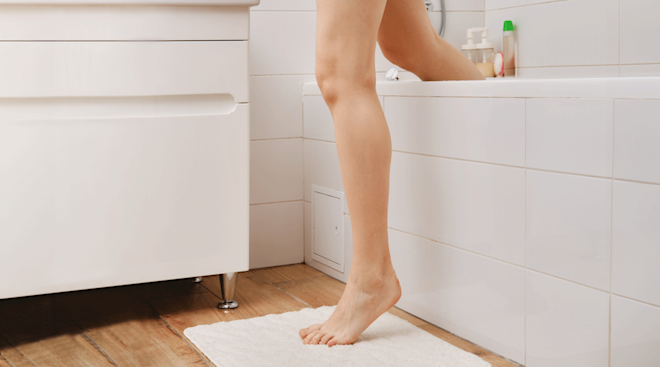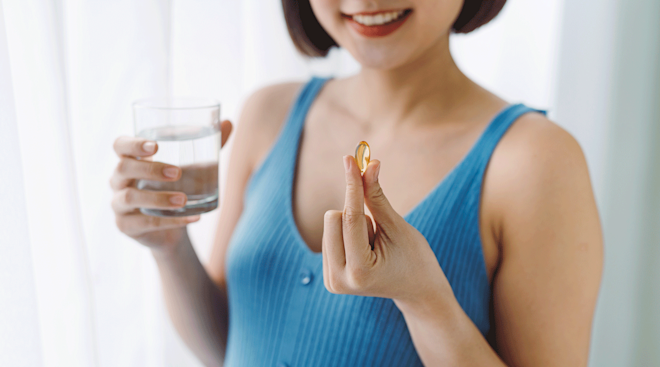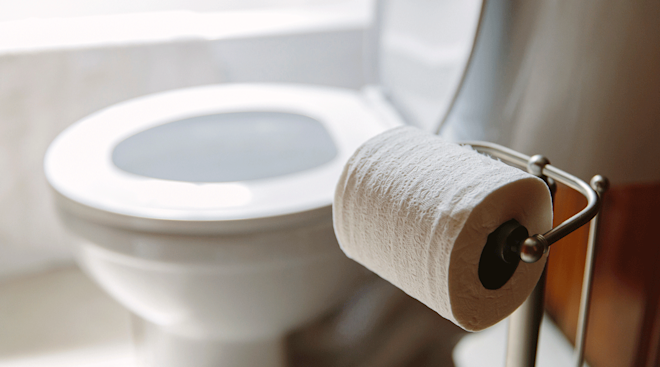Postpartum Snack Ideas That Are High in Nutrients and Low on Prep Time
There are a lot of things that happen after the birth of a baby that are more or less expected: the lack of sleep, shifts in hormones and endless diaper changes. But for everything we feel prepared for once baby arrives, there are a million other things that can catch us by surprise. One thing I hadn’t anticipated after the birth of my first baby: I got hungry—hungrier than I can remember feeling at any other time in my life.
It makes sense, actually. During the postpartum period the body is going through intense physical repairs while getting by on far less sleep. Some moms are recovering from a c-section, which is a major surgery and increases the need for protein and calories. Add in the additional demand of producing breast milk and you’ve got a recipe for one hungry mama.
This increase in appetite comes at a time when many of us start feeling pressure to get back to our pre-pregnancy weight, but try to put that aside. Now is the time for truly nourishing our bodies and allowing for recovery. Here are a few basic principles of healthy eating in the early days postpartum:
• Make time to eat. Of course, this is easier said than done. Skipping meals can happen without a second thought in the bustle of this busy time. I recommend setting a flexible meal and snack schedule (similar to what I would recommend when feeding toddlers). This can include three meals a day, or three meals and one to two snacks, or a series of smaller meals—whatever works for you. Enlist the help of absolutely anyone you can think of in prepping meals, assisting with the baby during mealtimes and even just providing a reminder to sit down and eat.
• Make sure to eat enough. Postpartum is a unique time that comes with both physical and emotional challenges, which can be supported with nourishing, whole foods. I don’t recommend worrying about hitting a specific calorie or macronutrient goal; instead, focus on internal hunger and fullness cues and eating to satiety while avoiding restriction.
• Eat a variety of foods. This is especially true while breastfeeding. Exposure to a variety of flavors through breast milk can impact flavor acceptance of little ones later in life. In other words, you may be less likely to end up with a picky eater! Variety also ensures that all of your micronutrient needs are being met.
• Drink a lot of water! Fluid needs are higher during pregnancy, and it can be beneficial to keep up those hydration habits postpartum. (Although there is no official recommendation that fits everyone, 80 to 100 oz is a good amount to shoot for). If you’re a nursing mom, you may find your thirst is super-intense during let-down (thanks to the release of oxytocin), or maybe you’ve been constantly thirsty since having your little one—both are common experiences and a good reason to up your water and herbal tea game.
The snack options listed below have a few things in common: They’re packed with specific micronutrients that benefit breastfeeding moms, they’re great sources of protein and healthy fats to support physical and emotional postpartum recovery and they’re super-simple to throw together using nutrient-dense whole foods.
• Hard boiled eggs. Egg yolks are one of the richest sources of choline, a nutrient similar to a B Vitamin that’s crucial for brain development in nursing babies. Eggs are also high in protein and healthy fats necessary for postpartum healing.
• Scrambled eggs in butter with chopped greens. Use spinach, kale, chard—whatever you have in the fridge or freezer. The healthy fats in eggs and butter help to absorb the nutrients in the greens.
• Leftover bone-in chicken. Keep the skin on! It’s a great source of amino acid glycine needed for recovery.
• Whole grain English muffin spread with cream cheese and avocado. Top with everything bagel seasoning. A filling combo of fiber and healthy fats that comes together in a snap.
• Apple or banana spread with almond or peanut butter. You might be recognizing a pattern here: filling fiber and healthy fats make up the blueprint for the ideal snack.
• Pistachios mixed with dried cherries. High mineral content is one of the common denominators in foods thought to increase breast milk production. Nuts are a great source of minerals, including magnesium, calcium and potassium.
• Frozen raspberries drizzled with heavy cream. Studies have shown that sleep-deprivation can lead to an increase in sweet cravings. This snack or dessert combo is just sweet enough without any added sugar; plus, drizzling cream on frozen berries creates a delicious icy shell (my toddlers love this one too).
• Medjool dates stuffed with almond or peanut butter. A snap to put together, this snack is like a real-food Snickers bar when you sprinkle a few chocolate chips on top. Again, you’ll find that combo of filling fiber and healthy fats.
• Broth or stock. You can use packaged bone broth (often found in the freezer section of the grocery store) or pull from your freezer stash. Broths and stock contain essential amino acids and collagen to promote cell repair. Warm up a mugfull and season with salt and herbs.
• Roasted chickpeas. Drain 2 cans of chickpeas and toss with 2 to 3 tablespoons of olive oil and seasonings of choice before roasting at 400 degrees Fahrenheit for about 45 minutes. The prebiotic fiber in legumes, like chickpeas, feeds healthy bacteria in the gut.
• Canned skipjack tuna. Served on its own or mixed with mayo, pickle relish and chopped sweet peppers. Tuna is packed with protein and DHA, an omega-3 fatty acid that transfers into breast milk and is crucial in infant brain development.
• Whole milk Greek yogurt. Combine with black beans, salsa and cheese, or stir in nut butter and honey. Greek yogurt is a versatile, nutrient-dense staple that’s easy to turn to when you just need something to eat ASAP (likely a relatable feeling for many nursing moms).
• Plain kefir. Mix with orange juice or add to a smoothie. The probiotics, enzymes and vitamins in kefir support immune function during these early days of little sleep. Beneficial bacteria from Mom’s gut may transfer into breast milk, helping to make sure that baby’s microbiota is as healthy as can be.
• Canned salmon. It’s jam-packed with protein and healthy fats, including DHA and minerals like calcium, which support breast milk production. Try it mashed with avocado, lemon juice, salt and pepper.
• Soothing vanilla steamer. Heat whole milk in a small saucepan and whisk in honey and vanilla to taste. Whisk in a tablespoon of collagen powder for essential amino acids to aid in tissue repair. You can also mix this up in a blender for a foamy top.
• Hot cocoa. Heat coconut milk in a small saucepan and whisk in chopped dark chocolate and collagen powder. According to the traditions of many cultures around the world, warming food and drinks are thought to play an essential role in postpartum recovery.
• Fruit juice gummies. Heat 1.5 cups of 100 percent fruit juice until hot but not boiling (any variety but pineapple) and whisk in 3 tablespoons of gelatin powder until it’s dissolved. Pour the mixture into a glass dish and allow to set in the refrigerator until firm. Gelatin, like collagen, contains the amino acid glycine to support physical recovery.
• Simple energy bites. Pulse 1 cup oats, 1 cup dates and 1 cup nuts (I like cashews or pecans) in a food processor until a paste forms, then roll into balls. Store in the refrigerator for up to two weeks.
• Almond butter cups. These will satisfy your sweet tooth and also help to meet micronutrient needs thanks to the mineral-rich almond butter. On a parchment-lined baking sheet, dollop 1 to 2 tablespoons of almond butter in rows. Drizzle with melted chocolate chips and freeze until firm. Store in the freezer for up to three months.
About the expert:
Laura Morton, MS, RDN, LD, is a registered dietitian, cookbook author and mom to two adventurous toddlers. She shares budget-friendly, real food nutrition info and recipes for babies and toddlers on her blog and in her books. Morton believes that the goal with feeding, as in other areas of parenting, is to cultivate a healthy relationship that lasts a lifetime, and she shares this approach when counseling families locally and virtually. She and her family live in a 100-year-old farmhouse way out in the country, where you will almost always find them running around barefoot. Follow her on Instagram and Facebook.
Please note: The Bump and the materials and information it contains are not intended to, and do not constitute, medical or other health advice or diagnosis and should not be used as such. You should always consult with a qualified physician or health professional about your specific circumstances.
Plus, more from The Bump:
Navigate forward to interact with the calendar and select a date. Press the question mark key to get the keyboard shortcuts for changing dates.




















































